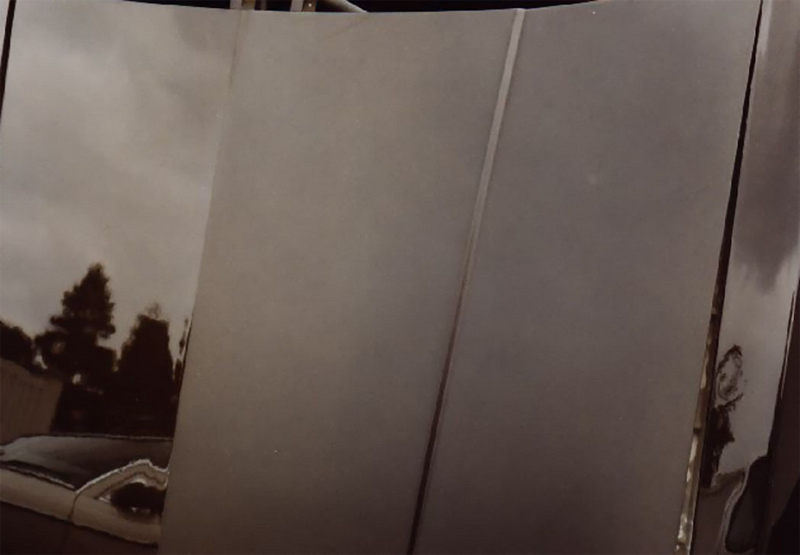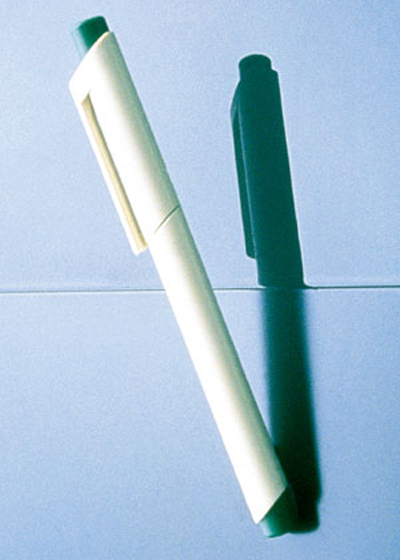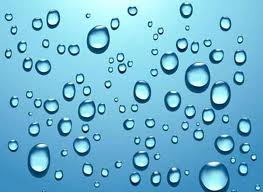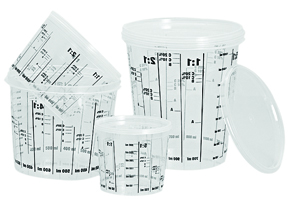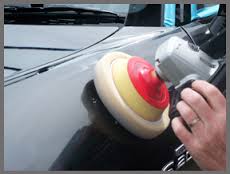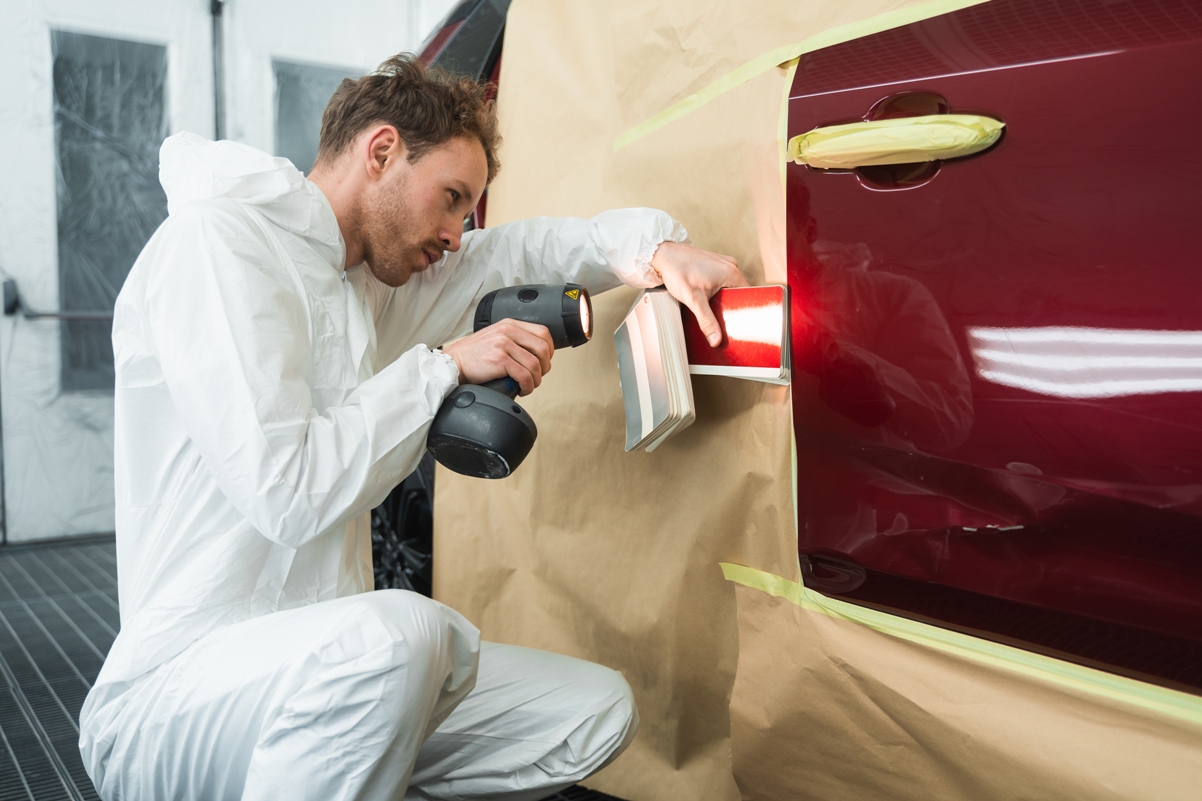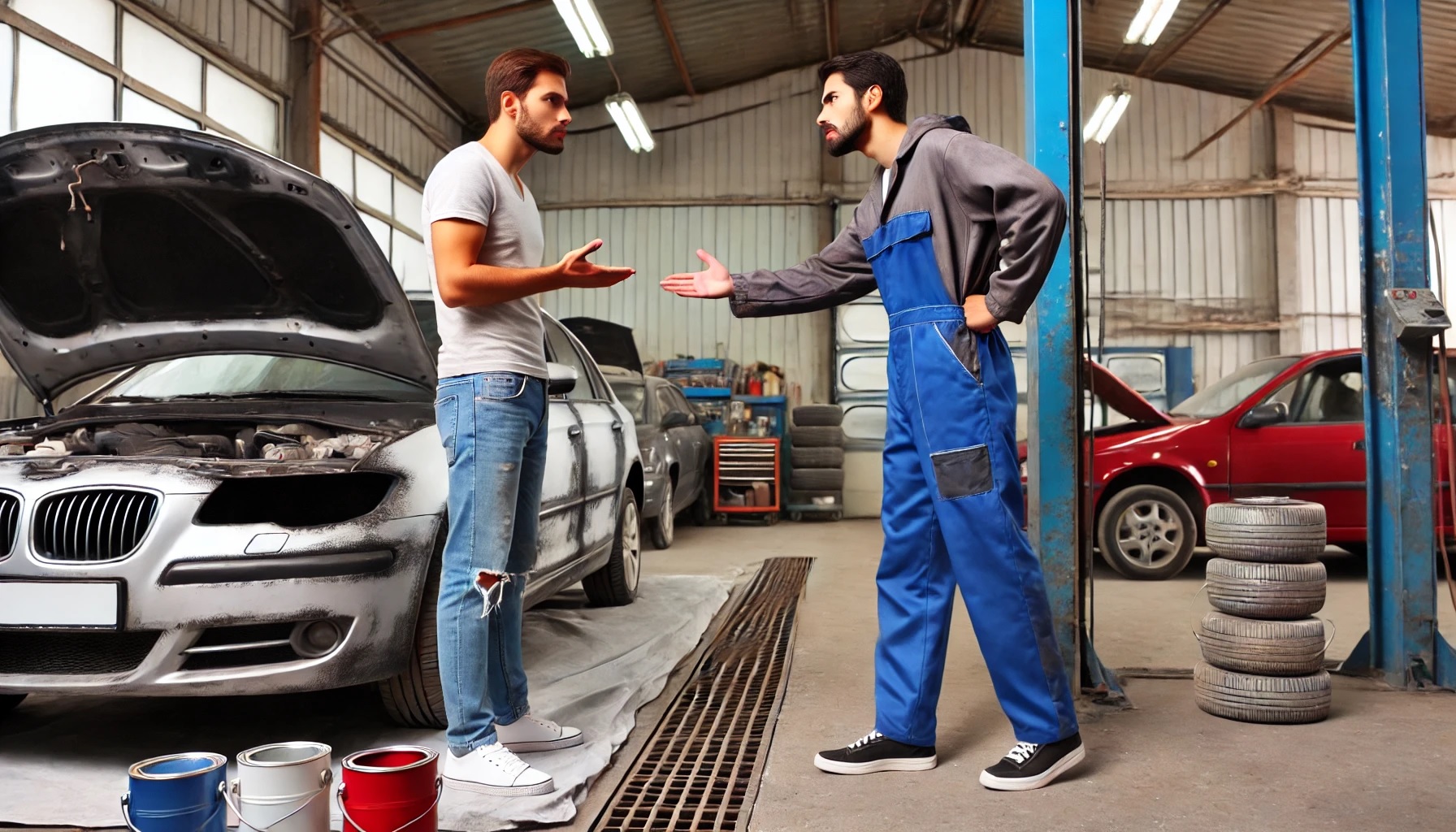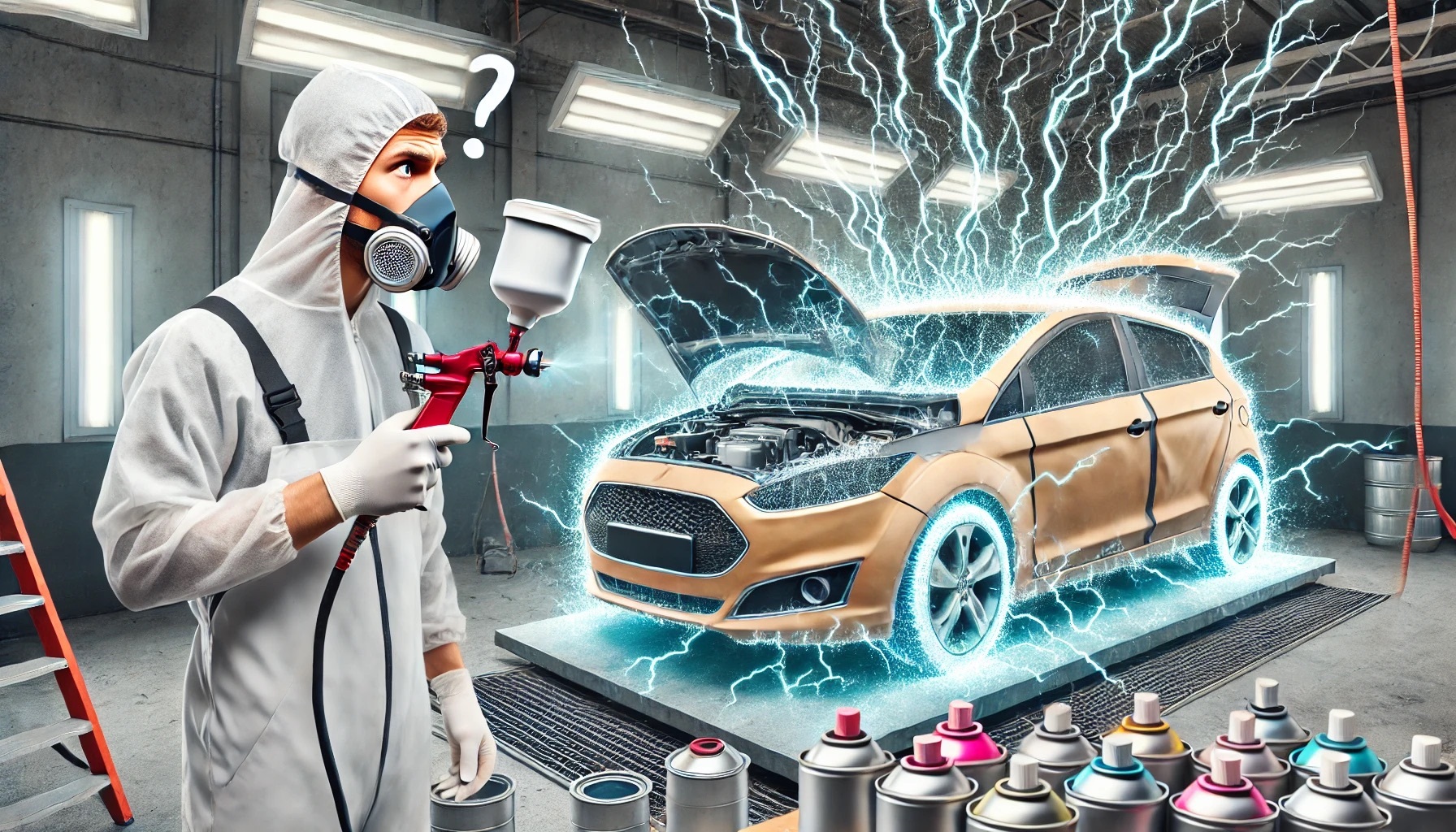Along with the posts about the major car paint defects in a bodyshop, I would like to elaborate further on one of those defects – clearcoat matting (or dieback). In plain English, it means that a surface (clearcoat) loses its gloss and transparency. Frankly speaking, I thought that I know all of the possible causes of this issue, but, thanks to LinkedIn group discussion, I learnt some new things as well.
Matting few weeks (months) after the repair job
First of all, I would like to distinguish between the problem of the cleared surface going matt right after the painting process and a few weeks or months later. For the latter case, the major two causes are:
– Insufficient clearcoat thickness. If we apply the clearcoat in layers that are too thin (less than 2 mils or 50 microns), then there is not adequate UV protection. Most of car manufacturers state that if more than 25% of OEM clearcoat thickness is removed, then there is no guarantee for either UV or physical protection for the element. Similar logic must apply to the refinishing job. If we spray clearcoat thickness of 40 microns or less, simply there will be not enough UV absorbers to block the UV light.
– Poor quality of the clearcoat applied with little UV absorbers (filters) in its formula.
Matting during or shortly after the clearcoat application
When I asked fellow members in different groups on LinkedIn about the problem of the clearcoat dieback, I didn’t expect so many comments. Actually there were more than 100 of them, thus giving me even more information to work with. Below you will find the list with possible causes for clearcoat matting, which I prioritized according to the collective opinion of my colleagues.
- Moisture in the air supply line. This was mentioned as one of the most frequent causes of dieback of clearcoat. Actually it is not difficult to understand that water (greater than 3% water content in the air) in the system is not good. Clearcoat molecules are supposed to bind with isocyanine from hardener. Water interferes in this chemical process causing the matting of the surface. Potential reasons of the water in the air system are the following:
– Bad quality or insufficient filtration and water drainage in the air line system
– Weak compressor, when overworks, causes a raise of temperature, leading to the humidity in the line
- Ambient humidity. According to many colleagues, placing a car or part in a place with high humidity (or/and painting in such conditions) while the clear is still drying, may lead to a dieback problem. I have to admit that some of the people during the discussion didn’t agree that outside humidity leads to this painting defect. From my side, I would just add that it may be the reaction of the hardener with the water in the air, which causes the problem. Therefore, it is always important to close tightly the tin containing hardener in order to avoid the reaction of outside humidity with a hardener in the tin.
- Insufficient flash-off times. Another very common reason for a clearcoat losing gloss could be not keeping sufficient flash-off time between basecoat – clearcoat application, especially when waterborne paint is used. In plain English, your basecoat must be dry to be cleared.
- Wrong mixing ratio with hardener. It is obvious that hardener quantity, quality and compatibility (yes, many painters mix hardeners from other producers or materials, trying to save money), is vitally important for a proper end result. Problems related to hardener are as following:
– Wrong mixing ratio (mixing cups and rulers are of a great help, don’t just use your eyes and experience)
– The hardener is too old
– The hardener is too fast
– Different viscosity of clearcoat and hardener (liquids with different viscosity won’t mix properly)
- The basecoat is too thick. If you spray more basecoat than it is recommended by the manufacturer, it is very probably that there will be solvent trapped in the film. As we mentioned before, basecoat must be dry enough to make sure that solvent inside is not trapped.
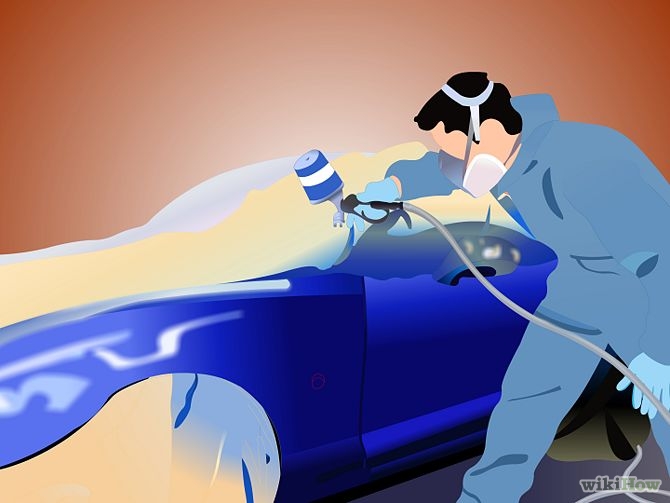
- Not enough air movement in a spray booth. Sufficient air movement in the booth is very important for proper drying in between application steps. Poor air circulation will affect flash-off periods, because technical recommendations are given for the properly maintained working environments only.
- Baking at higher temperatures than indicated by the manufacturer.
- Wrong reducer used. Over-reducing a clearcoat or using a too fast thinner may lead to the matting problem. Period.
- The layer of clearcoat applied is too thick. While putting less clearcoat may cause a problem within a few weeks or months (not enough UV-absorbers in the film), applying too much clearcoat may lead to matting much faster, especially if drying temperature is higher than advised.
- Waiting too long before turning on heat in a spray booth. The problem here is that the upper layer of clearcoat will start forming a skin, and after we hit the surface by high temperature, solvents inside the film won’t have easy way out.
- Polishing too soon. Compounding a freshly baked clearcoat is a bad idea. Not only you may leave very deep scratches, impossible to polish out, but you might get a matt surface instead of a nice glossy result. Give the clearcoat time for “rest”.
- Finally, waxing freshly painted surface is also risky. Nowadays, in the market we can find very efficient sealers or waxes, which penetrate the clearcoat, blocking solvents inside. Protection is better to do in a few weeks time after the repair.
I would like to thank everyone, who participated in this discussion in various LinkedIn groups. All of your comments are great. I just tried to put everything together. I write down all the names of the people who left their comments. If I missed someone, please accept my apologies.
Special thanks to: Darren Olson, Randy Stewart, Rich Williams, Frank Karasinski, John Poole, Eric Lowry, Barrett Smith, John Shoemaker, David Kershaw, Mike Anderson, Bob Adamek, Chris Rude, Mike Ingram, Bill Gaino, Hank Munn, Jose Manuel Herrera, Damian Farnsworth, Bret Carter, Gregory Blake, Marc Toegaert, Dominic Martinez, Tony Sanfilippo, James Moy, Sanjay Bhatia, Jose Carrilho, Michael Panizzo, Rich Gluck, Bart Wilbanks, Jean-Francois Lemaire, Wim Lesman, Tom Yates, Doris Key, Roger DePew, Jeff Loflin, Jaymes Khell, Ernesto Rehnes Criado, Yiannos Demetriades, Erick Huite, Jack Reinking, Shanker Achari, Angela Walton-Mowbray, Marcos Antonio Ribeiro, Dale Jones, Ketih Colovos, Michael Lin, Robert Brown, Marc Eichler, PB Deshmukh, Mamoon Rasheed, Bob Dennis, Brent Wallace, Peter Phillipson, Paul Brown, Hector Flores, Jake Coombs, Mark Lea, Anvar Umarov, Mike Smith, Michael Motes, Leonardo Latini, Marc Hutchinson, John Robin, Bill Fowler, Jim Byron, Malcolm Cutting, Marvin Golesch, Ghen Long, Sean Slaven, Arthur Allerd, Bernard Lee, Robert Dumais, Steve van Derbeek, Dominick Manno, Tom Skothos, Daniel Holmes, Stanley Crain, Steve Darr, Gary Docker…


